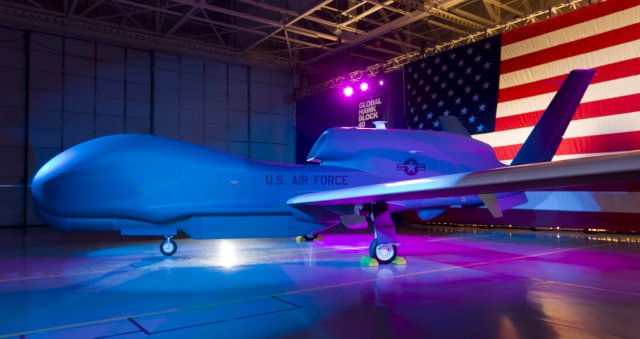The Pentagon’s proposed fiscal 2013 budget includes about $1.2 billion to buy three additional advanced versions of Northrop Grumman Corp.’s Global Hawk, according to a U.S. government official.
The Pentagon also proposes to continue an $11 billion Navy programme to buy 68 of the Block 30s equip them with the service’s own equipment, known as the Broad Area Maritime Surveillance system. The first BAMS aircraft to be deployed in the field has been flying surveillance missions over the Persian Gulf, said the official, who has knowledge of the Defense Department’s budget plans.
The proposed budget would buy three additional so-called Block 40 aircraft equipped with a sophisticated Raytheon sensor capable of simultaneously snapping detailed ground maps and tracking moving targets, said the official, who spoke on the condition of anonymity because he isn’t authorized to discuss the budget publicly.
The Air Force already has 11 of these latest models delivered or on contract, according to service and Northrop data.
The Pentagon Director of Operational Test and Evaluation in its latest annual report said the sensor, called the Radar Technology Insertion Program, “met nearly all system performance specifications with improved sensor stability.”
The official said the Pentagon also has accepted an Air Force recommendation to reduce its purchases of the third- generation Global Hawk, called the Block 30, and shift money to continued operations and maintenance of the high-altitude Lockheed Martin Corp. (LMT) U-2 manned reconnaissance aircraft, which first entered service in the mid-1950s. The Global Hawk was due to replace the Cold War-vintage U-2 spy plane in 2015, but those planes, built by Lockheed Martin Corp, would now remain in service until around 2023.
The decision to forgo buying the last 10 Block 30s is the second major reduction in the Global Hawk programme in less than a year. Last June, then-chief Pentagon weapons buyer Ashton Carter directed that 11 Block 30 Global Hawks be cut because of cost growth. The Block 30 airframes sell for roughly $30 million apiece, not including their payloads. The Air Force previously purchased 14 Block 30 Global Hawks, and Northrop is under contract to deliver four more, according to company data.
The New York Times reported in August that the Air Force had planned to cut total production of the Global Hawk from 77 to 55, which, in turn, bumps up the price tag for each plane to $218 million, including the cost of the sensor packages and research and development.
Sources: Bloomberg, Reuters, Stars and Stripes

